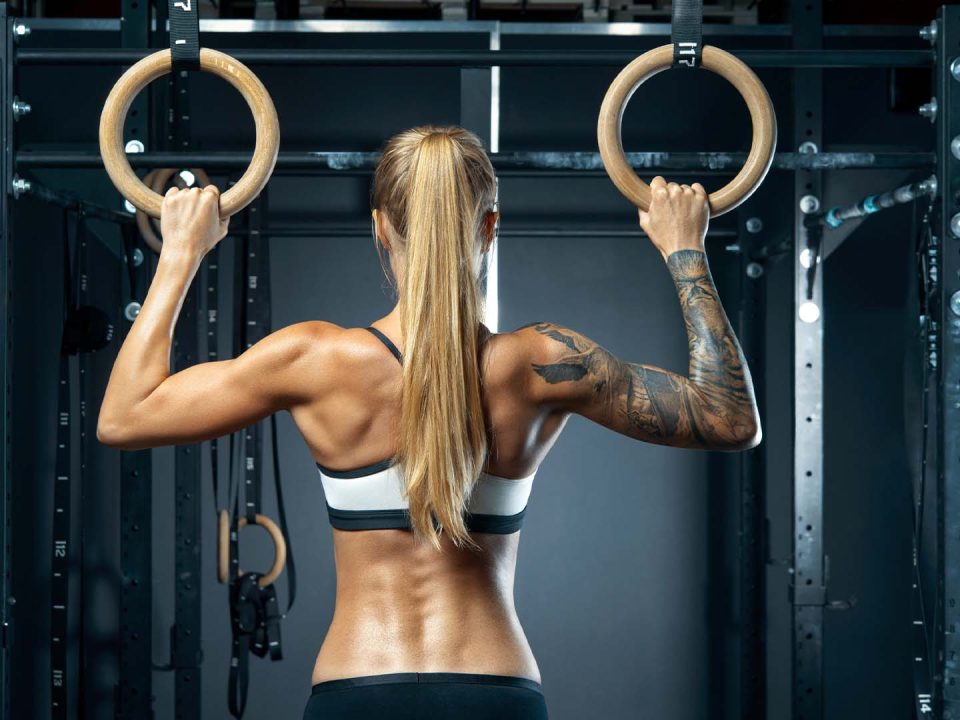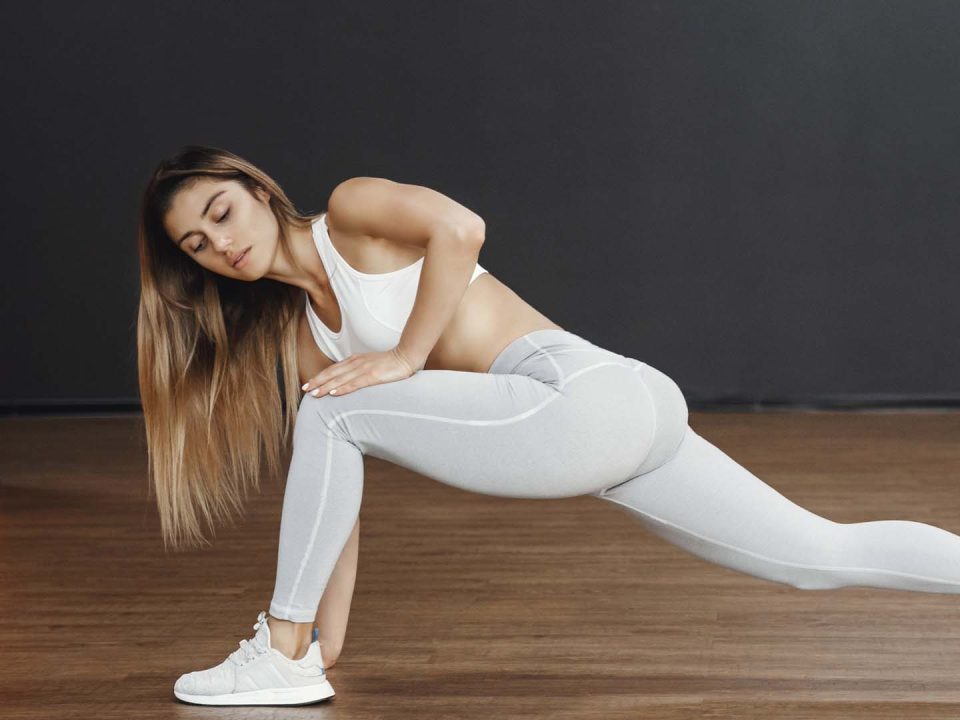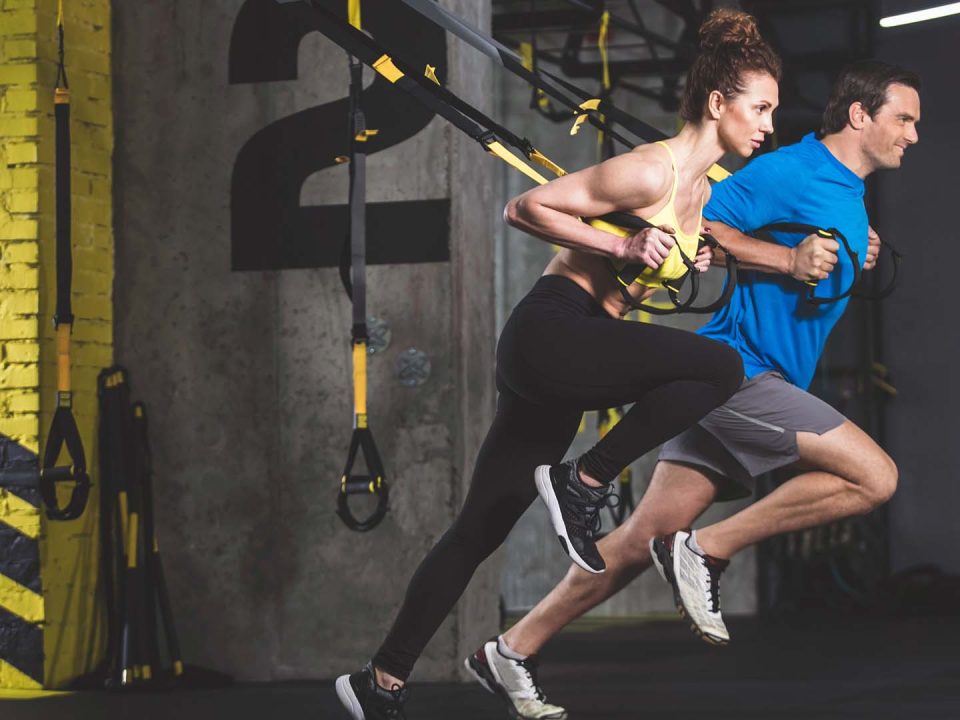Table of contents
- What Makes Functional Fitness Stand Out?
- The Science-Backed Benefits of Functional Training
- Who's Jumping on the Functional Fitness Bandwagon?
- Functional Fitness Workouts: What to Expect
- Safety First: Navigating the Intensity of Functional Fitness
- The Future of Functional Fitness
- Conclusion: Is Functional Fitness Right for You?
Functional fitness is revolutionizing the way we approach exercise. This innovative workout style focuses on movements that mimic real-life activities, making it both practical and effective. From lifting groceries to climbing stairs, functional fitness prepares your body for daily challenges.
The appeal of functional fitness spans across age groups and fitness levels. It's not just for athletes or gym enthusiasts. Everyone from busy professionals to active seniors can benefit from this versatile approach to exercise.
Recent studies highlight the effectiveness of functional training. A systematic review published in the Journal of Sports Science & Medicine found that functional fitness significantly improves muscle strength, power, and flexibility in various populations. The study noted a 21% increase in overall functional capacity among participants.
Gyms and fitness centers are taking notice. The American College of Sports Medicine's annual survey ranked functional fitness training as a top fitness trend. This surge in popularity is driven by its practical benefits and adaptability to different fitness levels.
What sets functional fitness apart is its focus on multi-joint movements. Unlike isolated exercises, functional workouts engage multiple muscle groups simultaneously. This approach not only burns more calories but also improves overall body coordination and balance.
The beauty of functional fitness lies in its simplicity. You don't need fancy equipment or a gym membership to get started. Many exercises use bodyweight or simple tools like resistance bands. This accessibility has contributed to its growing popularity, especially in home workouts.
As we move forward, functional fitness is poised to play a crucial role in promoting overall health and wellness. Its emphasis on practical, everyday movements makes it a sustainable approach to long-term fitness. Whether you're a fitness newbie or a seasoned athlete, functional fitness offers a path to improved strength, flexibility, and quality of life.
What Makes Functional Fitness Stand Out?
Functional fitness is revolutionizing the way we approach workouts. It's not just about lifting weights or running on a treadmill. This innovative training method focuses on movements that mimic real-life activities. Think about picking up groceries, climbing stairs, or playing with your kids. These are the motions functional fitness aims to improve.
Unlike traditional workouts that isolate specific muscle groups, functional fitness engages multiple muscle groups simultaneously. This comprehensive approach leads to better overall strength and flexibility. It's like preparing your body for the unpredictable nature of daily life.
One of the biggest advantages of functional fitness is its adaptability. Whether you're a fitness newbie or a seasoned athlete, these workouts can be tailored to your level. You can start with simple bodyweight exercises and gradually progress to more complex movements with added resistance.
Functional fitness also stands out for its efficiency. By combining strength training with cardiovascular exercise, you get more bang for your buck in less time. This makes it an attractive option for busy individuals looking to maximize their workout time.
Another unique aspect is the focus on core strength and stability. Many functional exercises require balance and coordination, which naturally engages your core muscles. This not only improves your posture but also reduces the risk of back pain and injuries.
Lastly, functional fitness keeps things interesting. The variety of exercises and equipment used prevents workout boredom. From kettlebells to resistance bands, the options are diverse and engaging.
The Science-Backed Benefits of Functional Training
Functional fitness is more than just a trendy workout. It's a scientifically proven approach to boosting your overall health and fitness. Let's dive into the amazing benefits that make functional training stand out.
First up, muscle power! Functional training significantly enhances your muscle strength, power, and flexibility. A study in the Journal of Sports Science & Medicine found that athletes who incorporated functional training saw improvements in speed, strength, and agility. This means you're not just getting stronger, you're becoming more powerful in your movements.
But it's not just about athletic performance. Functional fitness makes everyday life easier. By mimicking real-world movements, these workouts boost your overall body function. You'll find it easier to carry groceries, play with your kids, or even just climb stairs.
One of the best things about functional training? It's low impact. This means it's gentle on your joints, making it perfect for all fitness levels. Plus, it reduces your risk of injury by strengthening muscles and ligaments. You're not just working out, you're bulletproofing your body against everyday strains.
Balance and coordination get a major boost too. Functional exercises engage multiple muscle groups, improving your range of motion. This translates to better posture and fewer awkward movements in daily life.
But the benefits don't stop at physical improvements. Functional fitness can be a game-changer for your overall wellbeing. Regular training can help reduce joint pain, improve sleep quality, and even lower stress levels. It's a holistic approach to fitness that benefits both body and mind.
So, whether you're looking to shed a few pounds, boost your athletic performance, or simply move through life with more ease, functional fitness has got you covered. It's a science-backed way to transform your body and enhance your quality of life. Ready to give it a try?
Who's Jumping on the Functional Fitness Bandwagon?
Functional fitness is attracting a diverse crowd, breaking traditional workout stereotypes. Women are leading the charge, embracing strength training like never before. Gone are the days when weightlifting was a male-dominated arena. Now, women are discovering the empowering benefits of functional movements.
Seniors are also joining the functional fitness revolution. Tailored programs focus on improving mobility and reducing fall risks. These low-impact workouts help older adults maintain independence and quality of life. It's never too late to start, and many seniors are proving that age is just a number when it comes to fitness.
Athletes, from weekend warriors to professionals, are incorporating functional fitness into their training regimens. They're reaping the rewards of improved performance and reduced injury risks. Functional movements mimic sports-specific actions, making them invaluable for athletic enhancement.
Even busy professionals are finding time for functional fitness. Short, intense workouts fit perfectly into packed schedules. The efficiency of these exercises appeals to those juggling work, family, and personal time.
Surprisingly, rehabilitation patients are benefiting too. Physical therapists are incorporating functional movements to help patients recover faster and more effectively. This approach bridges the gap between therapy and everyday life.
Functional fitness isn't just a trend; it's a movement that's reshaping how we think about exercise. It's inclusive, adaptable, and effective for people of all ages and fitness levels. As more people discover its benefits, functional fitness is set to become a cornerstone of modern wellness routines.
Functional Fitness Workouts: What to Expect
Get ready to sweat and move in ways that mirror your daily life! Functional fitness workouts are all about preparing your body for real-world activities. You'll be doing squats, lunges, and push-ups, but with a twist. These exercises target multiple muscle groups at once, making your workout more efficient and effective.
Expect to use a variety of equipment. Sometimes, your body weight is all you need. Other times, you might use resistance bands, kettlebells, or medicine balls. Some gyms even have specialized machines like the Nautilus HumanSport cable strength-training equipment. These tools help simulate everyday movements and challenges.
Multi-joint movements are the heart of functional fitness. Instead of isolating muscles, you'll be doing exercises that engage your entire body. Think deadlifts that mimic picking up heavy groceries, or wood chops that simulate putting away high shelves. These compound exercises boost your overall strength and coordination.
Don't be surprised if your workout includes some balance challenges too. Standing on one leg while performing arm exercises or using unstable surfaces like BOSU balls are common. These exercises improve your stability and core strength, which are crucial for preventing falls and injuries in daily life.
High-Intensity Interval Training (HIIT) often plays a role in functional fitness routines. You might find yourself alternating between bursts of intense activity and short rest periods. This approach not only burns calories but also improves your cardiovascular fitness.
Remember, functional fitness is adaptable. Whether you're a beginner or an athlete, these workouts can be tailored to your fitness level. Start slow, focus on form, and gradually increase intensity. You'll soon notice improvements in your strength, flexibility, and overall ease of movement in your daily life.
Safety First: Navigating the Intensity of Functional Fitness
Functional fitness workouts pack a punch, but they're not without risks. Let's tackle the elephant in the room: injury rates. Studies suggest high-intensity functional training might have a slightly higher injury risk compared to less intense workouts. But don't let that scare you off!
The key to staying safe? Proper form and gradual progression. Start slow and build up your intensity over time. It's not a race, it's a journey. Listen to your body and respect its limits.
Here's how to keep yourself injury-free:
- Master the basics before diving into complex movements.
- Work with a certified trainer to ensure proper form.
- Warm up thoroughly before each session.
- Cool down and stretch after your workout.
- Stay hydrated and fuel your body with proper nutrition.
Remember, functional fitness is about improving your everyday life, not pushing yourself to the breaking point. If something doesn't feel right, stop and reassess. It's better to take a step back than to push through pain and risk long-term damage.
By focusing on technique and gradually increasing intensity, you can reap the benefits of functional fitness while minimizing injury risks. Stay safe, stay strong, and enjoy the journey to a fitter, more functional you!
The Future of Functional Fitness
Functional fitness is poised to evolve and adapt in exciting ways. As technology advances, we're likely to see smart equipment that tracks movement patterns and provides real-time feedback. Imagine a squat rack that guides your form or resistance bands that adjust tension based on your strength gains.
Virtual reality could revolutionize home workouts, creating immersive environments that make functional exercises feel like real-world tasks. Picture chopping virtual wood or climbing digital mountains from your living room. This blend of gaming and fitness could boost motivation and adherence.
Personalization will likely become more sophisticated. AI-powered apps might analyze your daily activities and create custom functional fitness routines to address your specific needs. If you spend hours at a desk, your program could focus on posture improvement and core strength.
The fitness industry may see a shift towards more functional-based gym designs. Traditional weight machines could be replaced by versatile equipment that allows for multi-planar movements. Group classes might evolve to incorporate more real-life scenarios, turning workouts into practical skill-building sessions.
As our understanding of biomechanics improves, functional fitness could become more precise. Exercises might be tailored not just to muscle groups, but to individual joint structures and movement patterns. This could lead to even more effective, injury-preventive workouts.
Lastly, the integration of functional fitness into rehabilitation programs is likely to grow. Physical therapists and trainers may collaborate more closely, creating seamless transitions from injury recovery to performance enhancement.
The future of functional fitness looks bright, promising workouts that are more engaging, personalized, and effective than ever before.
Conclusion: Is Functional Fitness Right for You?
Functional fitness offers a unique approach to wellness that can benefit people of all ages and fitness levels. It's not just about building muscle or losing weight; it's about improving your overall quality of life. By mimicking everyday movements, these workouts can help you move easier, feel stronger, and reduce the risk of injury in your daily activities.
But remember, every fitness journey is personal. What works for one person may not work for another. Before diving into functional fitness, it's wise to consult with a fitness professional. They can assess your current fitness level and help you create a safe, effective workout plan tailored to your needs and goals.
Functional fitness isn't a quick fix or a passing trend. It's a sustainable approach to long-term wellness that can adapt as your fitness level improves. Whether you're looking to enhance your athletic performance, maintain independence as you age, or simply make everyday tasks easier, functional fitness could be the key to unlocking your full potential.
So, are you ready to make your workouts work for you? With functional fitness, you're not just exercising – you're preparing for life. Take that first step towards a stronger, more capable you. Your future self will thank you for it.
Sources: American Council on Exercise, Journal of Sports Science & Medicine







